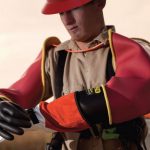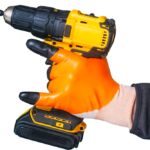What Climbing Gear and Safety Equipment Does a Lineman Need?
The job of a lineman is not an easy job, but it is a job that must be done. Linemen provide necessary maintenance and repairs for powerlines and other equipment, and they must climb utility poles, sometimes as high as 120 feet, to do their work. The climbing involved with a lineman’s work is one aspect of the job that makes it dangerous. It is very important for linemen to use proper climbing gear and fall protection safety equipment to do their jobs safely.
If you are new to the trade, it is important to know what climbing equipment you need and to understand how the climbing gear works. In this guide, we will cover the lineman climbing gear and equipment you will need to safely do your job as a lineman. The two main types of lineman equipment that we are going to cover are pole climbing equipment and fall protection gear.
At Divergent Alliance, we provide pole climbing gear for lineman as well as fall protection equipment for businesses in the Chicago, IL area and across the U.S. Call us at (847) 531-0559 or submit a contact form for pricing.
Pole Climbing Equipment
We are going to start by covering the equipment lineman need to climb utility poles. Utility poles in the U.S. may range in height from 40 to 120 feet and it is important for linemen to be equipped with climbing gear that makes the climb easier and safer.
It is important to remember that climbing gear is an investment, whether you are buying top of the line gear or gear that is less expensive. Understanding the different types of climbing gear as well as what you need to do the job will help you make a better investment in your climbing gear.
The following are the main types of climbing gear that linemen need:
Climbing Spikes
Climbing spikes, also known as hooks, gaffs, climbers, and spikes, are metal spikes that are strapped to a lineman’s boots to help them climb utility poles. Climbers consist of a leg iron that wraps around the bottom of the foot and a spike, called a gaff, that sticks out of the leg iron near the climber’s ankle. The height of the leg iron can be made from steel, aluminum alloy, or titanium and it can be adjusted to suit the comfort of the lineman. The spike, or gaff, is always made from steel so that it’s durable as it penetrates the utility pole.
Climbing spikes are attached to the boots using a lower strap around the ankle and upper strap around the upper shin. These straps may be attached using a buckle or Velcro. The upper strap consists of a pad that is comfortable against the skin and reduces chaffing.
There are a variety of climbing spikes available with different styles of leg irons, gaffs, straps, and pads. The following are the four main types of climbing spikes:
- Contoured shank: The leg iron of a climbing spike hooks around the bottom of your foot at the stirrup and the rest of the leg iron runs up the inside of your leg. For some linemen, the leg iron may rub against the ankle and cause painful chaffing. Contoured shanks give your ankle more room to move around to reduce chaffing at the ankle.
- Twisted shank: When a lineman supports the weight of their body on the gaffs, the shank will twist. This can be bothersome to some linemen. Twisted shank climbing spikes will compensate for this twist and keep the climbing spike secure against the leg.
- Offset stirrup: If the stirrup of the climber is too far forward or backward on your foot, it can make climbing uncomfortable. Offset stirrups will stay firmly in the arch of your boot.
- CCA gaff: Chromated Copper Arsenate (CCA) is a preservative used on some utility poles that helps extend its life. However, these poles are harder than typical utility poles which makes it more difficult to get the gaff to penetrate the pole. CCA gaffs are serrated gaffs that can penetrate CCA treated poles more easily.
At Divergent Alliance, we provide climbing spikes from Buckingham Manufacturing and Klein Tools.
Lineman Boots
Lineman boots are the next important piece of equipment you need to climb utility poles. Like with climbing spikes, lineman boots are an investment as their price generally ranges from $200 to $500.
One of the options to consider when choosing boots is whether you want 10-inch boots that come up above the ankle or 16-inch boots that come up right below the knee. You should choose based on comfort and what you need to stay protected. The other thing you need to consider with your boots is the safety toe. If your company requires you to use safety toe boots, you can get boots with toes made from steel or a nonmetallic composite.
Lineman boots are built to be comfortable and provide you with excellent support, especially if you need to spend a considerable amount of time climbing. In most instances, linemen wear their climbing boots all day so that they are ready to climb whenever needed without taking extra time to change boots. Therefore, your climbing boots should be comfortable enough to wear the entire day, not just while you are climbing.
There are many manufacturers who offer lineman boots at different prices. It may be best to buy midrange priced boots because they will provide more comfort and support and they will last a long time if you dry them out and oil them occasionally.
Lineman Belts
Lineman belts are belts used by lineman to keep themselves strapped to utility poles as they climb. The belt wraps around the lower back/ waist of the lineman and it is attached to a pole climbing strap that tightens around the pole. The pole strap prevents the lineman from slipping down the pole in case of a fall. The purpose of lineman belts is to support the lower back and keep the user secured to the pole they are working on. Linemen can also lean back as they work with both hands and be supported by the belt.
Lineman belts have D-rings at the hips that can be attached to lanyards or an anchoring device to keep the lineman secure. It is important for linemen to get a belt in the right size as a belt that is too tight will be uncomfortable while working and a belt that is too loose will slide up in a fall. The following are the different types of lineman belts:
- Full-floating belt: Full-floating belts have a stationary waist strap and easily adjustable D-rings. This belt does not allow for lateral movement of the belt strap with the tool loops.
- Semi-floating belt: These belts allow the waist strap to move within the back pad and allow lateral movement of the belt strap with the tool loops prior to wearing the belt. These belts do not allow lateral movement of the D-rings.
- Fixed belt: With fixed belts, there is no lateral movement of the D-rings or belt strap with the tool loops.
- Stacked body belts: These body belts are thicker to provide more support and they consist of 4 D-rings, with 2 D-rings positioned above the primary 2 D-rings. Stacked body belts are designed to be worn with the belt strap and upper D-rings on the waist and these belts make it easy to move and change directions.
- In-line D-ring body belts: These belts have a primary pair of D-rings with a secondary set of D-rings flared out behind them. The front D-rings are used as the primary attachment points for fall restriction devices while the secondary D-rings are only for use as a secondary attachment point when moving past obstructions.
- Adjustable body belts: These belts have an adjustable upper belt strap as well as an adjustable lower work positioning D-piece. The user can adjust the belt between 3 or 4 sizes while in use for comfort or to adjust to a specific work situation.
Divergent Alliance provides lineman belts from Klein Tools and Buckingham Manufacturing.
Fall Protection Equipment
In 2015, OSHA passed a standard in which anyone working at an elevation of more than 4 feet must use fall protection equipment. Before this standard was passed, it was common for lineman to free climb and attach themselves to the pole using only a lineman belt. Generally, lineman would climb above obstacles on the pole before attaching the pole strap or they would remove the strap when encountering obstacles to free climb past them before re-attaching it.
Under this OSHA standard, linemen must have fall protection at all times. At no point when climbing should a lineman be without fall protection, including when climbing above obstacles. Since this standard has been in effect, body belts by themselves are no longer acceptable as fall protection because they arrest a fall only at the waist which can cause injuries. Lineman must now use fall protection systems that consist of a full body harness or belts integrated with a harness.
Employers are required to provide fall protection systems for their employees according to the OSHA standard. There are three main types of fall protection systems and each of these systems consist of the following equipment:
- Full body harnesses: These harnesses consist of straps over the waist, thighs, chest, shoulders, and pelvis to evenly distribute force in case of a fall arrest. Lineman can use body belts as well as a full harness or belts integrated into a harness.
- Lifelines: Lifelines connect the body harness to an anchor. They tend to be flexible and there are self-retracting lifelines and deceleration devices available that allow for controlled descension and ascension. Self-retracting lifelines will lock automatically if a fall occurs.
- Lanyards: Lanyards are flexible ropes or straps that connect the harness to an anchor, lifeline, or deceleration device.
- Connectors: Connectors are often carabiners that are used to connect the parts of a fall protection system together including lifelines and lanyards to body harnesses and anchors.
- Anchors: Anchors are points of attachment for securing deceleration devices, lifelines, and lanyards.
- Pole straps: Pole straps anchor linemen to utility poles by wrapping around the pole and attaching to the body harness or body belt.
As mentioned above, there are three types of fall protection systems used for different tasks in different scenarios. The following are the types of fall protection systems:
- Personal fall arrest system: Personal fall arrest systems use a combination of full body harnesses, shock-absorbing lanyards, lifelines, and deceleration devices to arrest the fall of a worker from a walking working surface such as a bucket or a basket. These systems can also be used for wood pole climbing by securing a rope-positioning tube and dielectric lifeline at the top of the pole. The lineman can safely climb the pole without a second positioning strap and move around almost any obstruction without making connections, disconnections, and adjustments for each obstacle.
- Work positioning system: This fall protection system is most commonly used by linemen to keep them suspended when working on a vertical surface like a utility pole. With this system, a body harness is used along with a pole strap and lifeline to keep the lineman suspended and their hands free. Self-retracting lifelines can be used to allow control over the rate of descension and ascension and these lifelines will lock up automatically in case of a fall. This system should be set up so that a lineman will fall no more than 2 feet before the lifeline locks.
- Fall restraint systems: With this system, the climber’s body weight is used to mechanically cinch and lock a device around the utility pole to stop a fall if a lineman’s climbing spikes lose contact with the pole. The equipment provides a limited fall arrest, especially for bare sections of a pole where a climber could free fall for more than two feet. You can use some fall restraint equipment to safely work on icy or slippery poles.
Divergent Alliance offers fall restraint and work positioning fall protection equipment from Buckingham Manufacturing.
Lineman Climbing Gear and Fall Protection Equipment from Divergent Alliance
 It is important for all linemen, no matter their level of experience, to use the proper climbing gear and fall protection equipment to stay safe during climbs. At Divergent Alliance, we offer climbing equipment including climbing spikes, as well as fall protection equipment such as harnesses, anchors, lanyards, and lifelines from top manufacturers including Klein Tools, Buckingham Manufacturing, and SafeWaze.
It is important for all linemen, no matter their level of experience, to use the proper climbing gear and fall protection equipment to stay safe during climbs. At Divergent Alliance, we offer climbing equipment including climbing spikes, as well as fall protection equipment such as harnesses, anchors, lanyards, and lifelines from top manufacturers including Klein Tools, Buckingham Manufacturing, and SafeWaze.
All of the fall protection equipment we provide is OSHA compliant and made by the best manufacturers of the industry. You can reach Divergent Alliance at (847) 531-0559 or by submitting a contact form for more about our lineman climbing gear and fall protection equipment. We offer fast shipping in the Chicago, IL area and across the U.S.







